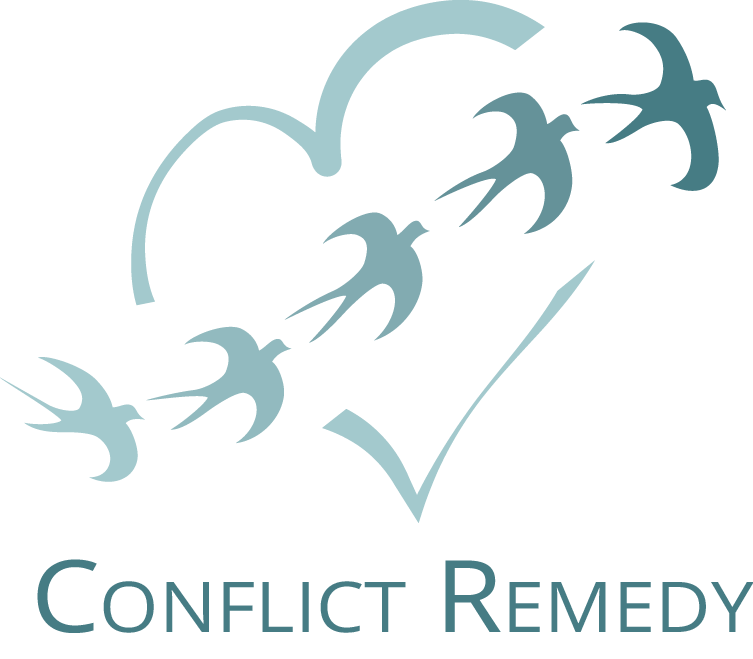Conflict in businesses and organizations can show up in at least three different ways.
Recently, I was called in to consult with the board of a volunteer service organization experiencing some serious problems with internal conflict. As in many organizations, they knew something had gone wrong, but had no idea how to pinpoint or address the issues.
As I reflected on how I could simply and briefly explain in general terms the possible sources of their conflict, I realized that in my experience, there were three common ways organizational conflict shows up, alone or in combination, that require somewhat different approaches to manage and resolve.
From my experience, here are three major causes of conflict problems:
1. interpersonal conflict
Conflict between two individuals or sometimes groups who are holding grudges and resentments, gossiping, making unverified assumptions, telling themselves or others stories that aren’t true about the other person. They constantly trigger each other, have poor communication, and tend to escalate over time. These problems can persist for years.
2. Bullying or mobbing
Bullying is not at all the same as interpersonal conflict, but can masquerade as it. Bullying can sometimes be dismissed as a “personality” clash. But the difference is that in bullying there is a power imbalance and the aggression is all one way, not mutual. These people are misusing the power they have, either because of their status in the organization or their aggressive energy and tactics, to demean, harm, or intimidate another person or small group. This can be linked to discrimination and prejudice as well.
3. Systemic/organizational problems
Many organizations have dysfunctional systems, processes, and/or gaps that don’t meet the needs of the organization. The organization might have grown rapidly without the structures it needs. It could have a chaotic way of making decisions, poorly run meetings and project follow up, muddy lines of authority, constant changes in company objectives, frequent turnover and change in personnel, or other structures that prevent the organization from flourishing. Some organizations lack HR support and policies. Systemic problems also fuel interpersonal conflict and bullying patterns .
So how can these kinds of conflict be approached and resolved?
Individual coaching for those in conflict followed by dialogue coaching or mediation can help those in interpersonal conflict at work. Individual supportive coaching for people being bullied and for people acting out bullying behaviors can also help. Training can enable managers, executive, HR, and colleagues to recognize and manage interpersonal conflict as well as bullying behaviors.
Coaching and training are powerful tools, but they only offer limited fixes for systemic problems.
While the skill building aspect of coaching and training can ripple out to others in conflict at work, similar patterns of conflict or bullying will keep reappearing unless the organization develops policies, procedures, and practices and embeds them in a new business as usual model. .
Here is how this could work. everyone in a company is trained to recognize bullying and intervene appropriately, if higher ups address complaints quickly and appropriately, that shifts the organization around bullying. Or if the company hires an organizational ombuds or has a conflict management expert on contract, then educates staff about how the experts can help and makes them available to everyone with total confidentiality, that can shift how the organization as a whole navigates conflict. And if the company looks within and gets help from organizational conflict and development specialists, to analyze and fix structural problems, then change and build new processes and procedures and then follow them consistently and follow up persistently,a whole new culture can arise.
None of this is quick or easy, but given the high cost of persistent conflict in terms of time, money, productivity, harmony, and good will, can organizations really afford not to do this work?
 About Lorraine Segal
About Lorraine Segal
As a teacher, trainer, consultant, and coach, I am passionately committed to helping people in organizations and companies learn skills to release conflicts and misunderstandings, communicate better, heal from bullying, and create a more harmonious and productive workplace. I lead the Conflict Management certificate program at Sonoma State University, and teach communication, bullying awareness, and conflict management skills there and online. I create customized programs for businesses, non profits, and the public sector, as well as working with individual managers and employees. For more information about how we might work together, or to request a free short consult or a full session, visit ConflictRemedy.com
© Lorraine Segal Conflict Remedy 2019

